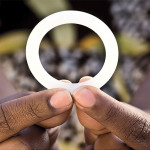HIV-positive people who have ever taken Viread (tenofovir disoproxil fumarate, or TDF) have an increased risk of a bone fracture, regardless of the time spent on the drug, aidsmap reports. Researchers followed 11,820 members of the EuroSIDA cohort, which includes people living with HIV in Europe and Argentina. Results were presented at the 2016 Conference on Retroviruses and Opportunistic Infections (CROI) in Boston.
Tenofovir, which is associated with bone mineral density decline, is the most commonly prescribed antiretroviral in the world. There are two types of the drug on the market today, tenofovir disoproxil fumarate, or TDF, and a new version, tenofovir alafenamide, or TAF. Studies of the latter drug have shown it is safer to the kidneys and bones. TAF was first approved as a component of Genvoya (elvitegravir/cobicistat/emtricitabine/TAF) in November 2015. TDF is included in the combination tablets Truvada (TDF/emtricitabine), Stribild (elvitegravir/cobicistat/emtricitabine/TDF), Atripla (efavirenz/tenofovir/emtricitabine), Complera (rilpivirine/tenofovir/emtricitabine) and Edurant (rilpivirine/tenofovir disoproxil fumarate/emtricitabine).
This study only considered those taking TDF.
While tenofovir is also linked to bone mineral density loss in those taking Truvada as pre-exposure prophylaxis (PrEP), there has been no evidence in studies indicating that HIV-negative people are at risk of a fracture as a result of taking the drug. (The follow-up period in these studies has been relatively short, however, so there has been no research examining the long-term implications of Truvada use among HIV-negative people.) Another study presented at CROI found that young HIV-negative adults who stopped taking Truvada saw a reversal in their bone mineral density loss.
The participants included in the study were all followed starting after 2004. They contributed 86,118 person-years of follow-up (person-years are the cumulative years participants spend in a study).
The participants experienced 618 fractures, for an incidence of 7.2 per 1,000 person-years) and 89 cases of osteonecrosis, for an incidence of 1 per 1,000 person-years. Osteonecrosis is a disease caused by reduced blood flow to the joints, which can cause the bone to break down. A total of 132 of the fractures were recorded as related to a loss in bone mineral density.
After adjusting the data for various elements, the researchers found that factors associated with raised risk of bone fractures included being older, a body mass index below 18, injection drug use, starting the study with a lower CD4 count, coinfection with hepatitis C virus (HCV), a history of osteonecrosis, a history of bone fracture, non-AIDS related cancer, and having had cardiovascular disease in the last year.
Compared with people who had never taken tenofovir, those currently taking the drug had a 25 percent raised risk of fracture, and those who had ever taken TDF had a 40 percent increased risk. The length of time spent taking tenofovir had no bearing on the risk of fracture. No other antiretrovirals raised the risk of such an outcome.
To read the aidsmap article, click here.
To read the conference abstract, click here.
To view a webcast of the conference presentation, click here.







Comments
Comments